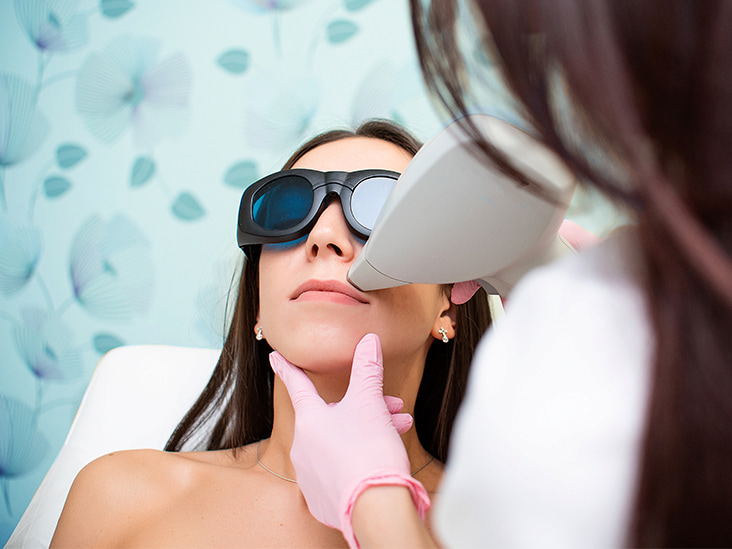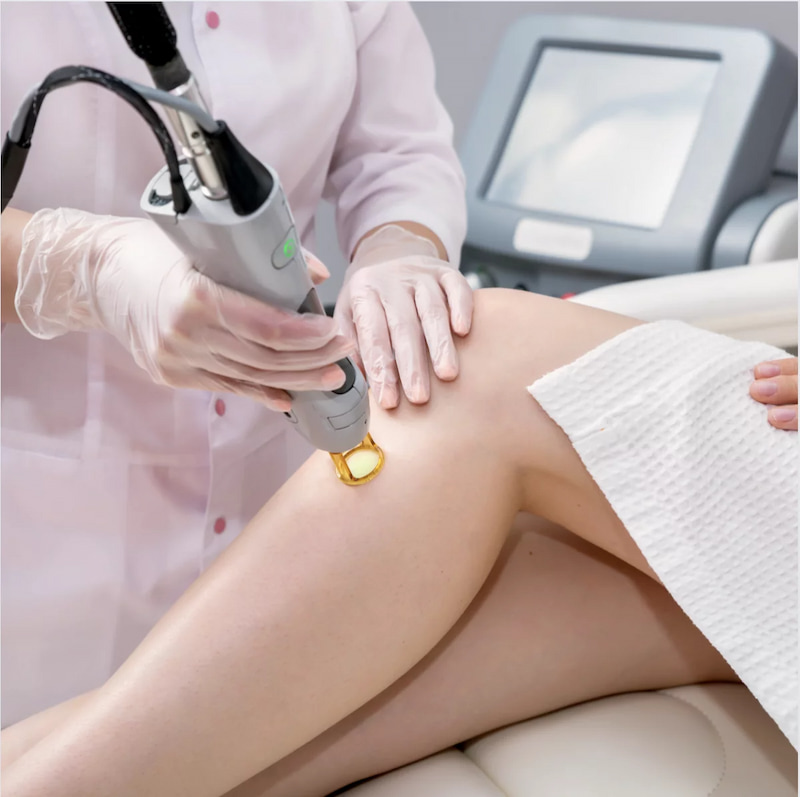
How Many Sessions For Laser Hair Removal: Is Worth It?
First, how many sessions for laser hair removal?
Laser hair removal usually requires two to six treatments. Depending on the location, there may be a difference in the time between treatments. The procedure might be repeated in four to eight weeks on areas where hair grows quickly, like the upper lip.
Table of Contents
The Benefits Of Laser Hair Removal
Saves Time
This procedure can be finished in less than 30 minutes for many body parts. You probably won’t need to stay longer than two hours at the medspa, at most, for large areas like the legs. You might need an additional 15 minutes in the shower to shave. You might end up shaving more than 3900 times over the course of the next 25 years just to keep your skin hairless! If it takes you 15 minutes each time, you’re wasting 58,500 minutes.
You will spend about the same amount of time shaving as you will using depilatory creams, and you must repeat the procedure on a regular basis. Although waxing is less common, it still produces temporary results, and you must allow time to drive to your appointment. You can see how much time this method saves when you realize that laser treatments only require one or two touch-ups annually and about six initial sessions to achieve smooth skin.
Saves Money
You need to purchase a lot of products if you plan to continue shaving, waxing, or using depilatory creams for the rest of your life. The cost of getting laser treatments is offset by the lack of need for razors, shaving cream, aftershave, depilatory creams, and waxing appointments. For instance, the price of shaving for a lifetime can reach $10,000. By using laser treatments to get more durable results, you can “shave” this money off your budget.
Reduces Irritation
The skin becomes irritated by shaving, waxing, and depilatory creams. They can cause razer burn, cuts, burns, redness, and ingrown hairs. These adverse effects are made worse by the necessity of repeatedly using the techniques that cause them in order to maintain smooth skin. By receiving laser treatments, you can stop using razers, hot wax, and/or chemicals that dissolve hair on a regular basis on your skin.
Provides Smooth Skin All The Time
How frequently have you begun to put on shorts or a swimsuit only to realize that you neglected to shave? You won’t ever need to remember to shave if you get rid of your own unwanted hair by using laser treatments. You can go to the beach, wear short sleeves, and carry on with your day without worrying about your hair.

Risks Of Laser Hair Removal
The likelihood of experiencing side effects varies depending on the patient’s skin type, hair color, treatment plan, and adherence to pre- and post-treatment care. The most frequent negative effects of laser hair removal include:
- Skin irritation. Following laser hair removal, temporary discomfort, redness, and swelling are possible. It usually takes several hours for any symptoms and signs to go away.
- Pigment changes. The affected skin may change color as a result of laser hair removal. These modifications could be short-term or long-term. Darker skin types and those who don’t avoid sun exposure before or after treatment are most at risk for skin lightening.
Rarely, laser hair removal can alter the texture of the skin by causing blistering, crusting, scarring, or other problems. Graying of treated hair or excessive hair growth around treated areas are rare but possible side effects, especially on darker skin.
Eyelids, brows, and surrounding areas shouldn’t be treated with laser hair removal due to the risk of serious eye damage.
How Do You prepare For Laser Hair Removal?
Choose a physician who has experience with laser hair removal on your skin type and is board certified in a specialty like dermatology or cosmetic surgery if you’re interested in the procedure. Make sure a doctor supervises and is on-site throughout the treatments if a physician assistant or registered nurse will perform the procedure. Be wary of spas, salons, and other establishments that employ non-medical personnel to perform laser hair removal.
To find out if laser hair removal is the best course of treatment for you, schedule a consultation with the doctor before beginning. This is what your doctor will probably do:
- Review your medical history, including medication use, history of skin disorders or scarring, and past hair removal procedures
- Discuss risks, benefits and expectations, including what laser hair removal can and can’t do for you
- Take photos to be used for before-and-after assessments and long-term reviews
The treatment plan and associated costs should be discussed during the consultation. An out-of-pocket expense, laser hair removal is typical.
Additionally, the doctor will provide detailed instructions on how to get ready for laser hair removal. These might include:
- avoiding the sunlight. Preventing sun exposure both before and after treatment is advised by your doctor. Apply a broad-spectrum, SPF30 sunscreen before going outside.
- Lightening your skin. Serums that darken your skin tone should be avoided. If you have a recent tan or darker skin, your doctor may also advise using a skin bleaching cream.
- not using other hair removal techniques. At least four weeks before treatment, avoid using hair removal methods like electrolysis, waxing, and plucking because they can disrupt the hair follicle.
- preventing the use of blood thinners. Aspirin and other anti-inflammatory drugs should be avoided prior to the procedure, so ask your doctor about these.
- shaving the affected area. The day before laser treatment, trimming and shaving are advised. The hair shaft is left intact beneath the skin’s surface, but it removes hair that is above the skin and may cause burns to the skin’s surface.
How Can I Make The Treatment Go More Easily?
Make sure your skin is freshly shaved but not waxed, bleached, or plucked before your appointment if you want your treatment to go as smoothly as possible. Laser penetration and targeting of active hairs are facilitated by shaved skin. Avoiding the sun and any spray tans is a good idea prior to your appointment. You should also refrain from using lotion, deodorant, or makeup on the day of your appointment. Your skin should be pure, uncontaminated, and free of any cosmetics.
Stop using these products a few days prior to your appointment if you use Retin-A, which is present in many anti-aging and acne medications, as it can lead to complications during the procedure. People can usually start using products again five days after their laser treatment. However, because every person is unique, it’s a good idea to consult with us before you begin using the products once more. Read the active ingredients on your products or search online to see if they contain Retin-A. Take a break if you’re unsure. Your skin will be grateful.
Read about: How Long Does It Take To Grow Hair 12 Inches?
How Long Will It Take Me To See The Results?
Although everyone is unique and the results will vary depending on your body’s response to the laser and the type of hair you have, many people notice a thinning of their hair immediately after the treatment. You should expect that your hair will grow back a little bit because it takes several sessions to completely remove hair in a particular area. In general, the new hair is much lighter and finer than the hair that was removed.
After the treatment, your existing hair should begin to fall out. Gently wiping it away with a warm washcloth is the best way to get rid of it. Avoid scrubbing too vigorously because you risk irritating the skin.
Exists A Downtime Period?
The fact that there is virtually no downtime and no discomfort during the sessions is one of the biggest benefits of this treatment. Most people consider this procedure to be preferable to other options like waxing, which can be more damaging to the skin.
What To Expect During A Session
In order to locate the hair root and follicle, the targeted area will be exposed to several laser pulses. Because the follicles are destroyed by the lasers, new hair cannot grow there. In order to fully address all of the follicles in any given area, the treatment must be performed over the course of several sessions because hair grows at different times. The treatment is generally considered to be painless.
What Happens After Your Treatment
Avoid exposure to the sun and avoid waxing or picking at your skin right after laser hair removal. Additionally, you ought to refrain from applying any scented or Retinol creams to the skin. Keep it tidy and sprinkle some baby powder on it to keep it cool and dry. After the procedure, many people observe that their hair begins to shed and that their skin is glowing, smooth, and lovely underneath.
How About Lasers For The Home?
There are lasers that can be used to remove hair at home. These gadgets might slightly reduce hair growth. The effectiveness of these devices in comparison to laser hair removal performed in a doctor’s office, however, has not been thoroughly studied.
Furthermore, the U.S. These at-home laser hair removal devices are not subject to the same level of regulation as other medical devices because the Food and Drug Administration views them as cosmetic rather than medical. There haven’t yet been any substantial, long-term studies on the effectiveness and safety of the home machines.
Follow the user manual if you decide to use a home laser hair removal device to help lower the risk of injury, especially eye injuries.
Conclusion
The post talked about how many sessions for laser hair removal.
The number of sessions required to completely remove unwanted hair varies depending on the individual’s body type and various biological factors. The typical number of laser treatments required by clients to completely remove hair is between two and six.
After your initial treatment, you can anticipate a 10% to 25% reduction in hair growth. As your treatments go on, you’ll notice that your hair is losing hair at a slower rate and that it is falling out more frequently.






